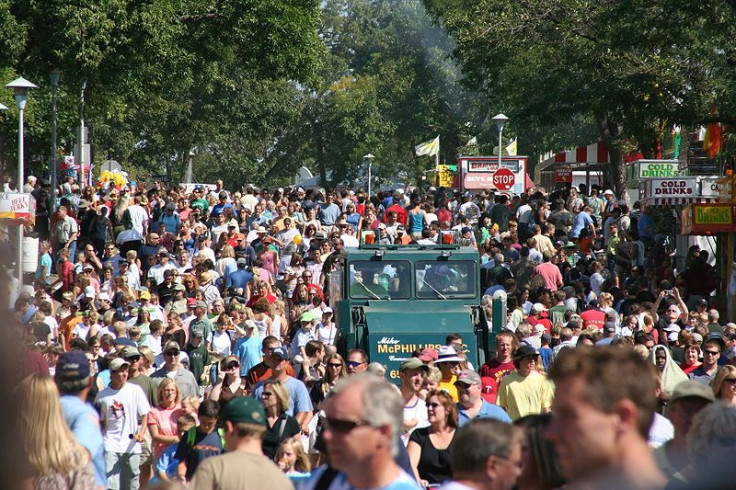Population Of White Americans Declining For First Time Ever: What Will Race Look Like In America’s Future?

For the first time in history, the white American population is declining, new data from the U.S. census reveals.
The decline observed was razor-thin — about 12,400 — and was offset by a wave of immigrants, 188,000 strong. But even though the net population grew, the natural decline carries no precedence. Demographers say in the next three decades, white Americans will become a minority group, raising questions on whether the increased minority presence will allow us to keep our current classifications of race.
"These new census estimates are an early signal," said William H. Frey, a demographer with the Brookings Institution, "alerting us to the impending decline in the white population that will characterize most of the 21st century."
No longer will ethnic minorities look to whites to support their financial livelihoods, Frey said, because the baby boomers are aging, and soon their lion's share of the population will transfer to the burgeoning minority groups. Currently, the Asian population in America shows faster increase than any other racial or ethnic group, at 2.9 percent last year, or 530,000 people, with immigration accounting for 60 percent of that spike.
Experts cite numerous factors in the population's decline, including the recent economic recession, women delaying marriage and motherhood for a career, and that white women forego having children more than any other race.
But one of the more potent questions surrounds the U.S. census itself, which has the logistical matter of race identification on its hands.
The Hispanic population grew more than any other population last year, increasing by 2.2 percent, or more than 1.1 million people. Natural increase also accounted for 76 percent of the growth, which means the prospect of relabeling white/non-Hispanic as "Hispanic/non-white" on future surveys merits consideration.
Majority populations enjoy the privilege of setting descriptive norms. The dwarf population in the U.S. is still a fraction of "normal"-heighted people, and despite the genetic component, if dwarves were to outnumber traditionally normal-sized people, the taller minority would become giants.
Race and ethnicity follow a similar path. Social programs that have long favored the upper- and middle-class white population will be spearheaded by current minorities, Frey said, the successes of which "will be reliant on the success of waves of young Hispanics, Asians and blacks who will become the bulwark of our labor force." Minorities "will hold greater sway than ever before," he said, giving credence to the idea that the white population declining as minorities overtake large sectors of the economy will transform ideas of "whiteness" as well.
The 2010 census was the first to offer boxes for "Mixed Race," a population of people whose reportage increased 32 percent from 2000. Meanwhile, single-race populations increased 9.2 percent, indications that the United States has become more homogenized.
One theory in particular extends this idea to its extreme, stating that on a long enough timeline everyone will eventually look Brazilian.
According to Stephen Stearns, a Yale professor of ecology and evolutionary biology, the process of assortative mating — mating with people of similar ancestry — has changed since the age when people could only find mates if they were within walking distance.
"The distance between the birthplaces of parents has continued to increase since the invention of the bicycle," Stearns told Life Science, "making it now easy, if not standard, for parents to have been born on different continents."
Stearn's remarks echo the phenomenon in the United States nearly perfectly. Compared to the more homogenized nations around the world, such as many Nordic or Scandinavian countries, the U.S. has long been revered as a melting pot. The decline in white Americans, another evolutionary biologist notes, could just be part of a larger, overall homogenizing.
"Most of the traits that we think of as distinguishing different groups (hair color, skin color, hair curliness, facial features, eye shape) are controlled by multiple genes," said University of Delaware biology researcher John McDonald, "so they don't follow a simple dominant/recessive pattern. In those cases, blending will make people look more similar over time."
The social backdrop appears to fit McDonald's model: as whites decline, fewer whites engage in assortative mating, out of both natural preference and less availability. So while Americans may not end up looking like Brazilians anytime soon, the Brazilians that do live here may become the majority anyway.



























